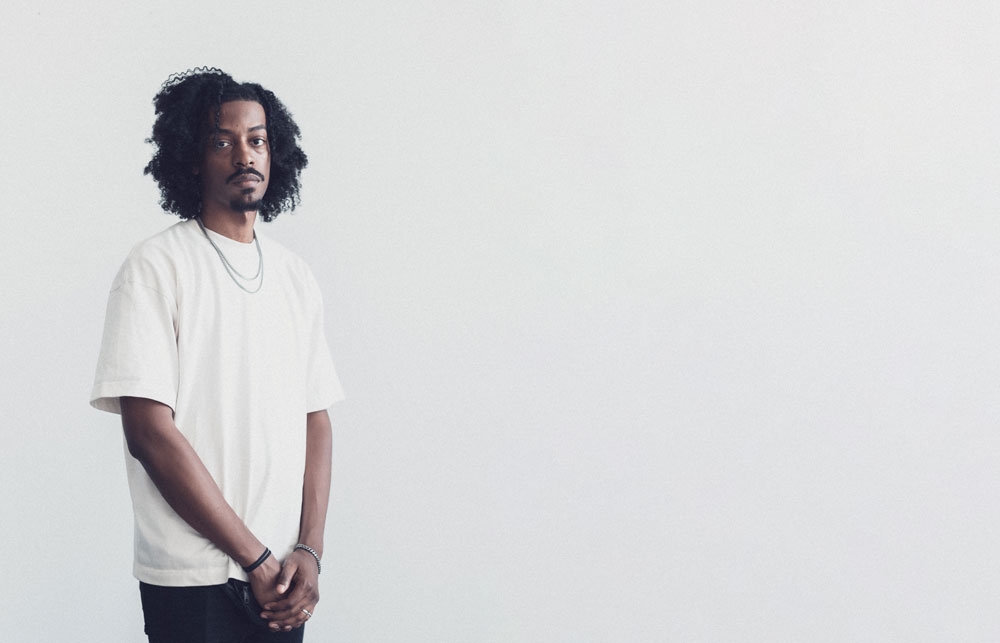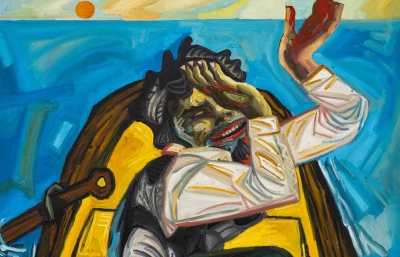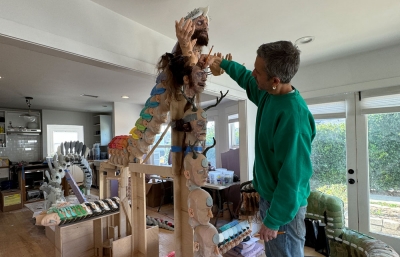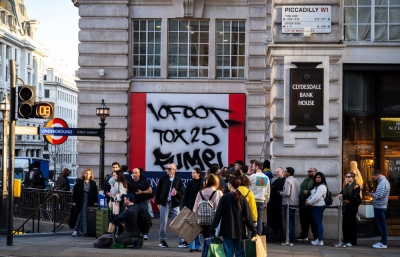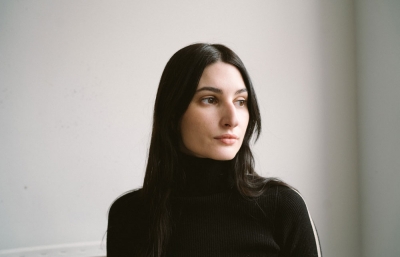Jameson Green
The Past, Present and Future
Interview by Evan Pricco // Portrait by Charles Roussel
Freedom is a term we often use when trying to explain the essence of a good painter, or a good artist in general; that they show a sense of freedom, of an originality that makes their art feel fresh, or just plain exhilarating. It’s an ownership of self and the ability to express one’s consciousness in a pure way. While I think the word is overused, speaking with Jameson Green gave me a new perspective on what it means to have freedom in making art. For the Hudson Valley-based painter, embracing the past has made him more present. He isn’t chasing the legacies of artists he has admired through time, whether Picasso, Gustav Klimt, R. Crumb, or Dana Schutz, but exploring what happens when he has a conversation about his artistic awakenings with these artists on the canvas right in front of him. What if he shares what he has learned and makes it something completely original and engaging in itself? It’s a new idea of how to paint, and it’s exhilarating to witness.
In 2022, Jameson Green soared into the contemporary art world with three stellar shows at Almine Rech, Derek Eller, and Sorry We’re Closed, the type of shows that have collectors lining up and critical attention circling his every canvas. A gift occurred at the beginning of 2023: time. After the birth of his daughter, a move to a farmhouse in upstate New York with his wife gave Green the chance to breathe new life into his work, to take the whirlwind of his sudden success, and to reassess the meaningful moments in his studio. Now ready to show in Paris in 2024 with Almine Rech, we talked about how much he appreciates studio hours, how R. Crumb opened his eyes to creating unapologetic art, and the lived experience he feels only when he can get a brush to canvas.

Evan Pricco: Are you a morning person or nocturnal?
Jameson Green: I have a baby, so I have to be up in the morning. I'm whatever she needs.
How does having a baby affect your painting schedule?
My wife takes care of our baby during the day, so I paint starting around 9AM until a little after 5PM. Then I take over childcare duties in the evening.
Has becoming a parent changed your approach to painting? I feel like going to the studio and painting from 9 to 5, regular job hours, is actually a really, really healthy thing to do.
I used to have an erratic schedule, painting all day and through the night, and then sleeping until late in the morning. It had its value at the time, but now I feel much healthier with my current approach. I prioritize regular meal breaks and take care of my physical well-being. I'm in a much better space now when it comes to painting—a healthier space.
I remember Damon Albarn from Blur and Gorillaz saying he actually became a better songwriter when he went to the studio on a more of a 9 to 5 schedule, which seems to be the antithesis of what people think of the “life of an artist.” But I get it.
Yeah, I can believe that. I can believe that. I think, especially with having a child, there's something about coming into the studio and then not procrastinating. I feel like before, if I had all day, I would treat it as such, and there would be times where I just wasn't doing anything; I was just there. Which I think is a form of work, too, if you're around your work and you're thinking. But there’s something about putting in the time where I come in and I'm like, "All right, I have this set amount of time to get something going. And I'm not going to miss out on time with my daughter, so I need to get this moving.” And there's a level of focus. So I come in, as soon as the door closes, turn on my music, and I'm like, "Let's go to work."

I feel like, and I say this in the best way, you had a really wonderful explosion of success. In 2022, you were so active, with the solo shows at Almine Rech, Derek Eller, and Sorry We're Closed. But in 2023, you have taken a step back, putting some works into fairs and group shows but no solo shows. I like how you have slowed it down. And it seems like it goes really well with what you're talking about, having a kid—a different, new focus.
No, that makes a lot of sense, definitely. In fact, a lot happened in my life in that short period of time that took some time to adjust to. And I still haven't really fully adjusted. I mean, it was a pretty dramatic difference from having no cash at all to having cash and then not knowing what to do with it and needing to be as responsible as I can be. And then I got married, had a baby, bought a house, and had my studio built, and that's where I am right now. And it's crazy to think about just all of... I mean, just that being in my personal life, that changing, all happening. Not to mention the career stuff.
And the career stuff was different in terms of... I felt like all of a sudden I got on a rocket ship, and I was able to meet artists that I've been admiring forever. Next thing you know, I'm sitting down, having lunch with Carroll Dunham, and going over to Dana Schutz's studio and talking to her for hours. This shit is crazy, right?
I feel like I tried to take this year and be a little bit slower and just spend time with my wife and the baby and not feel like I needed to have everything met for the deadlines. And I appreciate the time too, because it gave me time to reflect, to look at what I've been doing, and to really appreciate it. I think when things happen too fast, you don't take the time to smell the roses in a way.
Well, it's funny, because when you said that your baby was born in January of 2023, it dawned on me how perfect it was for you to have that personal perspective all of a sudden. You were forced to slow down, but you could also refine your craft at the same time. That all seems really, really excellent after the explosion.
I 100% agree with you. There’s a benefit to this, because within that time of slowing down and changing my studio schedule, you really just started to create this. What is it called? Essentially, you create this space for your work to be able to grow without any necessarily outside pressure, you know? And you're not putting a time constraint on it. So I'm looking at it a bit differently. And I mean, I've always tried to reinvent myself every time things start to get a little stagnant; it's just part of how I think. And by stagnant, I mean, if I know how I'm going to approach it, that bothers me. So I'm thinking now, "All right, I can't keep doing it this way. Because I understand this, I need to be able to bring in more elements that I don't really know how to juggle."

So where are home and studio now?
Home and studio are now upstate in Hudson, New York. So I bought farmland, but I'm not a farmer.
As one would do.
You know? Haha, so we have a beautiful old farmhouse, and I built my studio out of an old dairy barn and a bunch of beautiful land to just look at and make adventures for the family. And I mean, it's a place where we look at it as a blank canvas and can create whatever we want out of it.
You grew up in New Haven and lived in NYC, so this is a far cry from that, I assume?
This is a complete country lifestyle, which is a night-and-day difference for me. And I love it. I really do love it. I mean, I grew up in the city; everything was public transportation; dealing with a whole bunch of people; and always having neighbors right above me. My whole life, I was pretty much the downstairs neighbor. So having this much space, it's pretty incredible.
I quite like that, "My entire life, I've been the downstairs neighbor." There's a lot there.
Yeah, there was only one time I lived above someone else. It's just interesting, because when I think about living in an apartment, I always think about people making the craziest sounds upstairs. Like, what are people doing upstairs? It’s a funny thought.

Let me explore something with you. So when you're young and creative and you want to draw and paint, perhaps you don’t necessarily know what's going on in the art world, but you want to know more, okay? Then you see R. Crumb's artwork, and then things feel possible—fun, provocative, interesting, gross, debaucherous, controversial—all those things that are great and lush for a young mind. I can only imagine young Jamerson Green in the New Haven public library, seeing R. Crumb’s work for the first time, and thinking about what explosion must have happened in your mind.
Oh, absolutely. I mean, R. Crumb was one of my first influences. I mean, I was quite a nerd in grade school, where I read comics all the time. I loved it. It was also my way of avoiding a lot of shit, and I was able to just go into an imaginative space and feel a little bit more—I wouldn't say safe, but like you get to ignore all the problems, you know? And I remember running into Crumb's work at the library when I was in ninth grade, and I loved the debauchery of it.
At first, it was something; when I looked at it, it was like, "Oh my God, this is an adult book. This is not for kids!” But I was captivated by it. I was making my own comics, so I was always taking inspiration from other styles that I was seeing. And the way Crumb was drawing, I mean, everything from his figures to the faces, there was such a natural approach to it that I felt was just like, "How the hell do you do that?" Just the ink work, the penmanship, to be able to crosshatch the way that he did and build the form, it was always something fun to look at and even try for myself. So it was comics that brought me into the art world. I remember that around the same time I was looking at Crumb, I had an interest in Maxfield Parrish. I thought those paintings were remarkable, that seduction of soft lines.
I think why Crumb was so interesting to me in the conversation about what you're doing in your work is that he was unashamed to ruffle some feathers. There's bravery in what you're doing right now with painting.
Thank you. Something happened in grad school where I felt this frustration that I couldn't complete anything. I couldn't finish a drawing. I couldn't finish a painting. I had hundreds of drawings that were just not really composed on a page, where I was just experimenting with different techniques. Paintings that would start and really never finish. So I would paint over them, paint over them, and paint over them. And it was becoming part of my critiques, where people were like, "Yo, why don't you just finish it? Just finish it." And I was like, "I can't." And I started to realize how much I needed freedom, but I also needed an objective. There was a lot that I felt I needed to say, and I didn't know how to at the time.

Give me an example of an objective.
Right. So, as an objective, I needed something to hold onto in the storm. So, I'll have this obsession with all of these different tools and ways of approaching a figure or approaching a visual problem, whether it be composition, color, or form, but what good was all of it if I couldn't say anything with it? That was what it started to come down to. And I was like, "I don't want to just do a portrait." And I found that I was taking more and more interest when I was composing a narrative, and that was allowing me to get through the piece, where I was getting to a point. The painting became more of a character in itself, and I was able to have more of a conversation with it. I think in a lot of ways Crumb brought that out in me, too, because I love that unabashed, just raw response to things. He didn't filter himself where he felt like he needed to apologize for what he said. And I felt like, "If there was any place you're going to do that, why not make it your art? Why not take that risk?" The art world in itself is very liberal, and sometimes with that ironically comes a lot of censorship.
There are things that you really can't say or can't talk about, or it would just be looked at as being like, "Oh, that's offensive. And I’m saying, "You know what? Fuck it. Let's talk about it." Because there's a complexity to life. I feel like we're constantly put in a position where we're hypocrites, we will contradict our younger selves, and we'll be in a position where, in many cases, I feel like we're more monsters than we are saints. I think that's the beauty of life—we'll spend more time correcting ourselves than actually being right. And I wish that was appreciated more, because I think that's the epitome of being a good person—recognizing the damage that you can actually do to someone else's life. It's practicing restraint, but you have to understand the worst of yourself first before you even know how to exercise any type of restraint.

I like this. Okay, how does this apply to just the idea of going to the studio and making artwork or a body of work? How does this new personal discovery about self and what's important affect the actual painting process?
That's a great question. In a lot of ways, I feel like we all go through the same thing one way or another; the only thing that changes is the narrative. It's how we tell ourselves the story, but there is that core human experience. And then I think, the closer I get to... I don't know how to articulate this, because I should be writing more. But the closer I get to the core, or the meat of the soul of myself, the more truthful the art becomes. And I think the more it does that, the more it starts to resonate with people, because even if they don't relate to it on the surface, there's a deeper connection. Not everyone can relate to my own experience in terms of just surface-level stuff, growing up as a Black male in America and living in low-income housing. The details really don't start to matter; not everyone is going to relate to that narrative or that story, but if I focus on the trials and troubles that I would have to overcome as a person while navigating those obstacles, that's something everyone can relate to, you know?
And it's this idea too; it seems like in some of the works, you can see little portions of personal awakenings happening in the paintings. Not only your experiences with art history, but your experiences with life start coming through, and it feels like a self-discovery, like I’m watching you learn about yourself.
This is good because I also have to figure this out for myself. Here is sort of what I have been thinking recently: I feel like I don't experience life until I paint it, which is a very strange feeling and maybe hard to admit. But with everything, even when I look at my family, I look at the loved ones in my life, and I'll have these precious, beautiful moments, and it's bittersweet because I don't feel present for them. No matter how hard I try, it's almost like I'm observing myself observing it, right? Which could be a symptom of a deeper problem, but I'm not sure.
So it feels like I'm almost spectating my own life. But then when I paint, and when I put brush to canvas, it's like, "Now I'm actually living." I'm living an experience all over again, but now I'm living it in a way where I'm there. I'm not a third party witnessing it; I'm now in the driver's seat. And then, from that, I find this new understanding. So the painting is the lens through which I filter life, because I really don't know how else to do it. So it's like, I need the paintings. I go for a while without painting; I stop feeling present.

I think that experience and knowledge are not linear. I think it works with what you're saying in the sense that you may observe yourself in life, but when you go back to the studio, only then do observations become a lived experience.
I think that's a fascinating thing about people, where it's almost like we're these entities that live inside this house, and we'll never actually be able to interact with one another; we can only talk to each other from the window. We're like, "Hey, how are you doing?" We'll never actually be able to touch and embrace because there's always that distance. We'll never know what it's like to be inside someone else's house. So I can't really understand how to think any other way, but the creative process for me has always been this access to reflection.
I think I've said this to a few other people before; it may have even been in an interview one time. People always mention to me, "Oh, you have this investment in art history." There's this real delving into the details and the history of painting. And part of the reason for that is because, in my mind, these artists, even though they've passed and not all of them are still alive, some of my favorite ones have gone and been gone for a while. But I feel like I have conversations with them every day. A lot of times, I don't even realize that I'm doing it until after it happens on the canvas.
People will tell me, “Oh, that was bold of you, just to take that character or style from that artist, but then you still own it." And I think the part of the reason why I'm owning it is because I'm not engaging with it as if it's just the ego of, "Let me steal that just to show off that I can take it." I view it as a way of speaking to the artists I love. You know how if you learn a word from your parents when you're growing up and you're forming your language? You'll take their tone, you'll take their mannerisms, you'll take the words that they say, and then you'll speak through it. I think painting is the same. You take parts of the things you observe and make them your own.
It seems to me you are looking at your heroes and influences and saying to them, "Hey, I'm going to bring you along with me because you were always part of my journey. Come with me." It’s a high form of praise, humility, and honor. As if you are saying, “I'm putting myself now into the canon of artists.” This is your conversation with art history, and we are allowed to watch it.
You couldn't explain it any better. That's what it feels like for me in the studio, or just making art. It's all this constant melding of experiences that weaves together and helps me convey what it is I'm trying to understand about myself. In a lot of cases, it feels like time zigzags, but there's this: you are history, and history is you and will always be the future.
Jameson Green will open a new solo show at Almine Rech Paris in 2024 // This interview was originally published in our SPRING 2024 Quarterly

